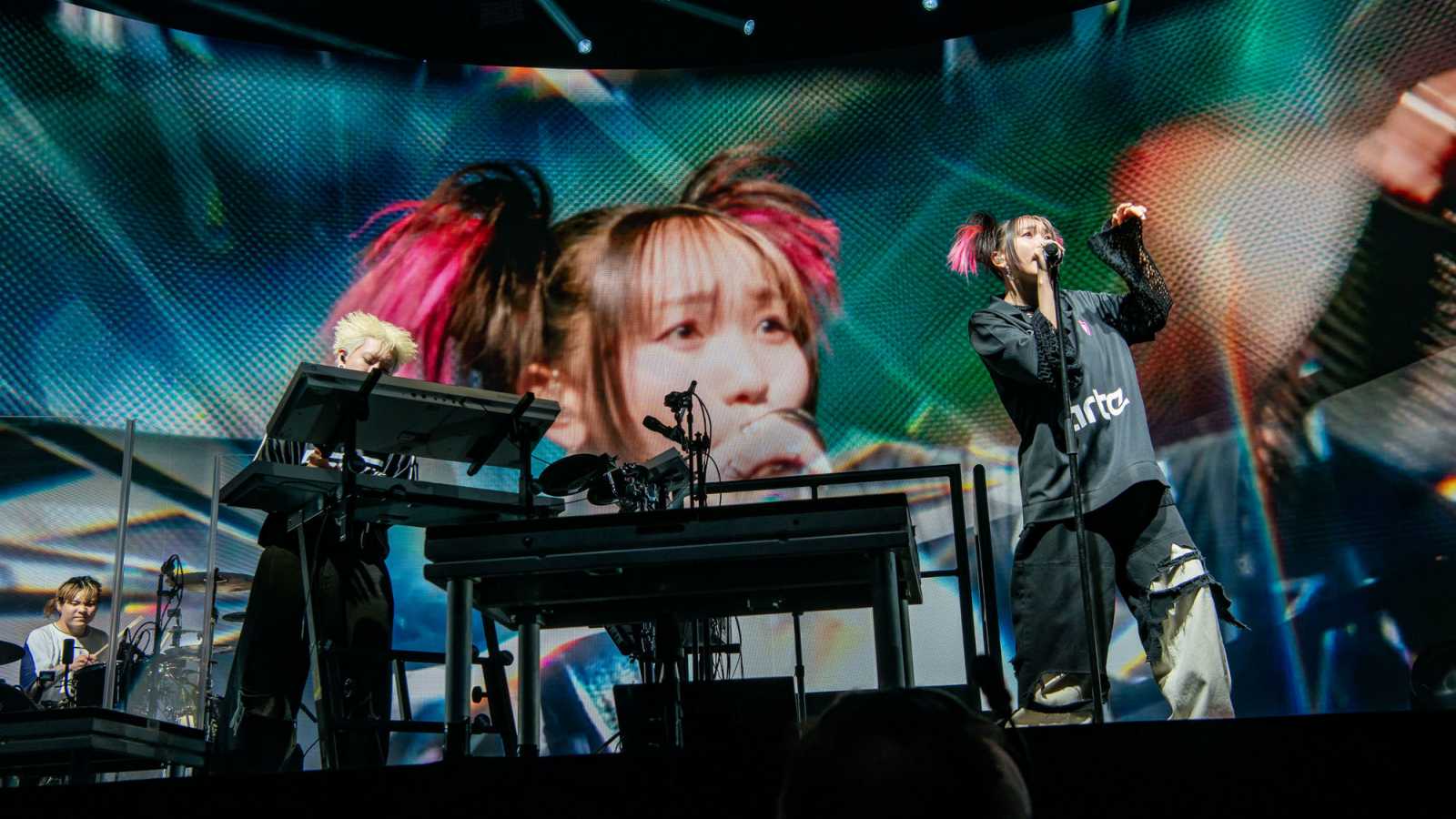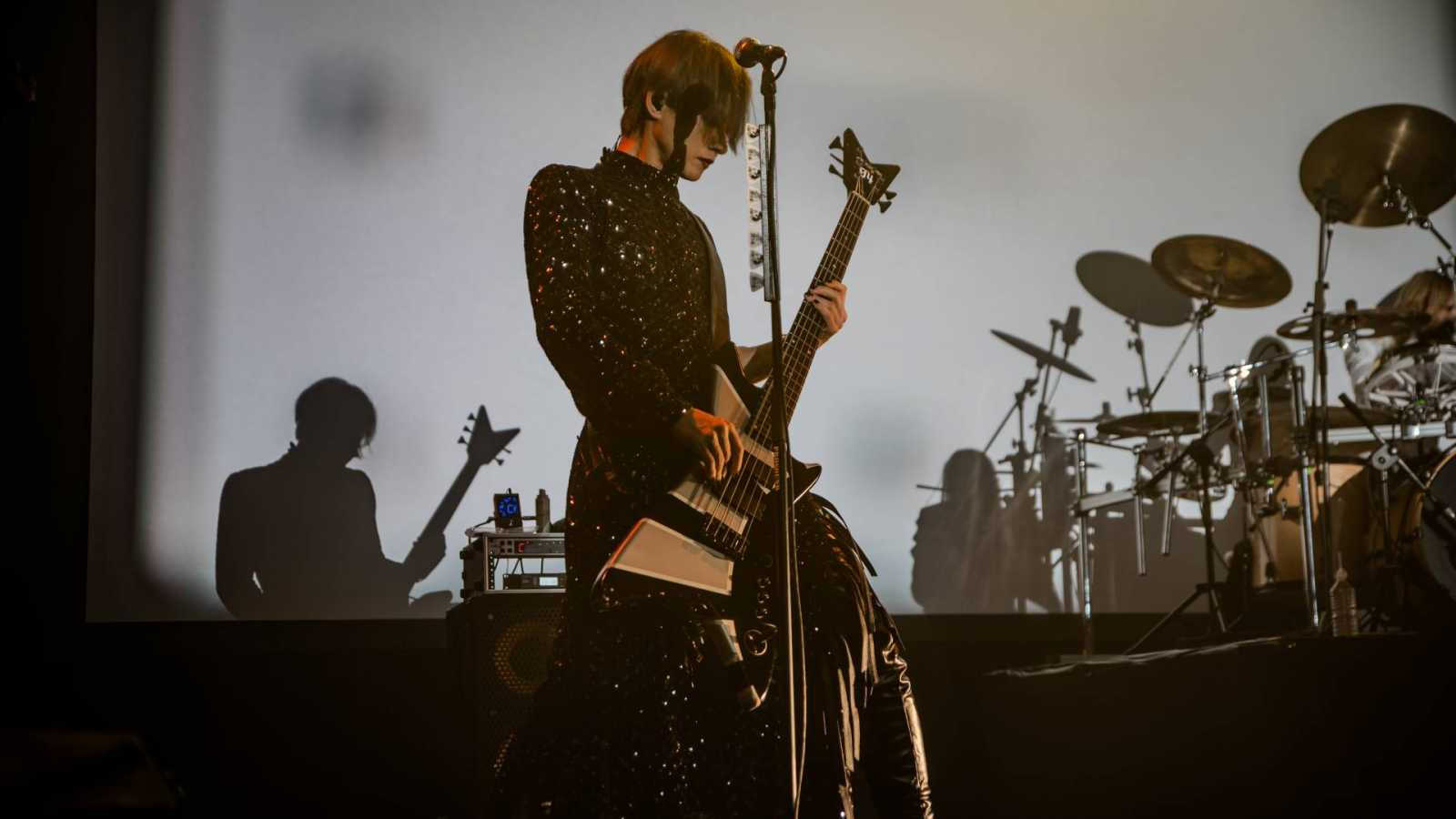Sakanaction's newest album, kikUUiki, will blow you away with its futuristic theme and fantastic melodies.
Sakanaction's first album for 2010, KikUUiki, was one highly anticipated by fans as it had been a full year since the band's last album dropped. At its launch in March, it found its way to #3 on the Oricon album charts, selling over 56,000 copies.
The introduction track, named after the album, is a startling combination of every day sounds mashed together to blunder the senses. There's gasps for air, planes landing, robots, guitars, static, a voice saying "kikuuiki," rain, club music, clapping and cheering, piano, footsteps in grass, a motorcycle, voices in a bar and a whir of a machine starting up. With one last whisper of the album's title, the song launches into track two, Ushio.
As voices come together to sing and clap in unison during Ushio's intro, the synthesized keyboard soon joins the mix. Before long, the Jetson's style spaceship noises echo between speakers, and Sakanaction transports listeners to what sounds like Mario land.The first stanza evens out when Yamaguchi Ichiro begins to sing, and instrumentally it focuses on the drum and the bass, which is the most prominent instrument. Almost styled like a futuristic acoustic song, the rest of the band joins in to sing during the chorus. Ushio's chorus is an experience in itself, with echoes and an instrumental composition that makes you feel like you're jetting across the star studded skies. Ushio truly sets the stage for music which matches the album's title of "airspace."
The second track, YES NO, made another appearance on Sakanaction's summer single Identity. Here it is remixed by Osaka-born musician AOKI takamasa. In its original form, each stanza is punctuated by a steady drum beat and Yamaguchi's vocals, joined at the end of each stanza with a cheerful flute and space ship orbital noises. By stanza three, we're bumped up a notch in speed, volume and the upbeat feel of the song, as it is clearly building towards the chorus. When YES NO's chorus bursts to life after Yamaguchi's voice fades into a series of echoes, listeners can hear the track at the prime of its sound. Following the climax of the first chorus, the next stanza is joined by the electronic keyboard and the bass, as well as a variety of sound effects, and it remains with the same ensemble until the song tapers off into the next track.
Listeners first got a glimpse of A Look Around two months previously when it was released digitally as a single; but is redone on the KikUUiki album. A cheerful fast-paced song, A Look Around will get any listener dancing before the song even reaches its one-minute mark. The song features harps, synthesizers and a variety of background singers and clapping. With its explosive chorus, powerful lyrics and Yamaguchi's deep singing style, the song truly stands on its own; it's understandable why it was released as a single first.
The next track, Klee, is a fast-paced rock song which starts with the guitar echoing only in the left speaker. We hear a glimpse of the heavy chorus rhythm before all of the music drops to a minimum, focusing on the staggering rhythm of the keyboard and guitar while Yamaguchi sings away. The chorus leaves nothing to be desired, delivering belted lyrics and a toe-tapping rhythm, adding Klee to the list of shining songs from this album.
Clapping, drums and the ticking of a clock signal the opening sequence for 21.1. With the bass beginning to build momentum as the guitar fades in and out, the song builds up to a very old-school electronic-rock sound, focusing primarily on the keyboard. The electronica track is just over four minutes long and features no vocals, instead honing in on the intricate musical abilities of each band member. For fans of daft punk, 21.1 will give the band a run for their money.
The next song on the album, Under, has a very traditional Japanese feel, with the koto and keyboard beautifully entwined during its opening sequence. When Yamaguchi's vocals join the mix, they sound slightly distant, allowing us to enjoy both without the two competing for attention. Shortly after the one-minute mark, the sci-fi orbiting noises and guitar come to play, and Yamaguchi truly begins to wail the lyrics. A much slower song than anything on KikUUiki so far, it's elegant, tasteful and a great cool-down song.
We find ourselves under water with the start of coelacanth to boku. Named after a fish who is believed to have gone extinct 65 million years ago, the water theme is quite suitable. After the water-bubbles fade, an acoustic guitar begins to play. Recurrences of water sounds remind us of our location, and Yamaguchi's vocals are faded and distant, as if we are hearing it through a small speaker far away. Like the preceding song, it starts off slowly but powerfully, and its chorus is not only catchy but profound. It is also the only time that Yamaguchi's vocals come fully into focus. After two minutes, the song begins to build towards a new rhythm, and it soon takes off with the electronic keyboard; it sounds as if we're in an underwater night-club. The change, while gradual, is a wholly welcome one and works well for the KikUUiki album.
The punchy keyboard opener for Ashita kara is a sound so deeply Sakanaction that it's impossible to imagine such a sound coming from another band. The lyrics tie in beautifully to the rhythm and build to its steady chorus, combining tambourine, group vocals and a disco-styled rhythm. The song plays with sound, with sections bouncing between speakers, guitar rifts and sci-fi laser and explosion noises punctuated by deep bass, bringing us back to the science fiction theme that Ushio set.
The tenth track, Omotesandou 26 ji has such catchy vocals and a well crafted rhythm that you will be dancing well before reaching the chorus. Aside from the blast-off space noises and sparkles that echo in and out, Omotesandou adds a new element not seen to KikUUiki before: sole female vocals! While Yamaguchi resumes during each stanza, Kusakari Ami and Okazaki Emi capture attention with their sweet voices during the chorus; this addition is a true treat to the album.
The following track, kabe shichou suru, starts with just the sound of a hovercraft, acoustic guitar and drums and is indicative of another slow song for the album. The science-fiction styled sound effects continue to tease listeners as they haunt the song every few seconds, but the monotone rhythm remains consistent until it builds up to the chorus; changing to a sound similar to that of radiohead. Being a short song which wraps up in little over three minutes, the song remains inundated with the electric guitar right up until it fades out into Yamaguchi’s final words, leaving listeners with a very different impression than the one given at its start.
The final track on the album, me ga aku aiiru, is a uniquely composed closure track. Carefully crafted with piano and a rifting guitar, the music crosses into a variety of styles and stirs just as many emotions, with Yamaguchi’s heartfelt lyrics spot on. However, around the two and a half minute mark, we’re suddenly dropped into what feels like Bohemian Rhapsody. For a new fan, this abrupt change may be overwhelming, but an experienced fan will simply laugh and surely exclaim, “oh, Sakanaction!” The wild chanting is truly just another part of what makes this band so unique and ties the entire album together for a finish with a bang.
For fans who had been anticipating this release or ones experimenting with Sakanaction for the first time, the album is truly an exceptional addition to their discography and one that shouldn’t be missed.



